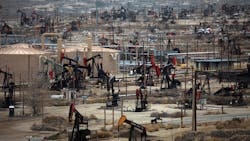Is Shale the Answer to Economic Development Job Growth?
With manufacturers betting heavily on the shale boom, states are busy counting the jobs that this energy source will create both directly and indirectly.
There is however debate over how many jobs it will create.
The National Association of Manufacturers says the shale boom could add 1 million manufacturing jobs in the country by 2025 if natural gas price increases remain moderate and industry regulation is favorable.
While IHS reports a larger number when looking at the entire value chain (downstream, midstream and upstream) and projects 3.3 million jobs in 2020 and 3.9 million jobs by 2025.
McKinsey Global Institute is predicting 1.7 million jobs by 2020. And this estimate is based on the fact that the industry could add 2%-4% ($380-$690 billion) to the US GDP.
A U.S. Chamber of Commerce study states that 1.7 million jobs have already been created with a total of 3.5 million projected by 2035.
States too have their own estimates.
In Ohio, which is home to part of the Marcellus Shale, the range of job creation is wide. A study in September by Kleinhenz & Associates, a Cleveland consulting firm, put the estimate at more than 204,000 jobs by 2015. But that figure was challenged by an an Ohio State University professor and his associate responded, saying the likely figure was 20,000. While Cleveland State University researchers, said 65,700 jobs would be created in the state in 2014.
In Pennsylvania the Department of Labor shows that in2013Q1 Marcellus Shale related industries total employment is 231,969. (This includes figures from 2009 Q1 until 2013 Q1).
In Illinois, where the New Albany Shale formation lies, the prediction, by the Illinois Chamber Foundation, is for 47,000 jobs, spurring $9 billion in statewide economic development by 2018.
The jobs will be created across a variety of industries that directly and indirectly serve exploration of this oil source. For example, the American Chemistry Council ACC lists 110 new investment projects for the U.S., worth some $77 billion since 2008 .
Global companies are also part of the job creation picture. In fact last year, according to the IHS study, unconventional oil and gas production, attracted U.S. capital investments totaling $121 billion last year, with the potential to attract $240 billion by 2025.
From a macroeconomic impact this sector has contributed $284 billion toward the U.S. GDP last year and is expected to rise to $533 billion by 2025.
Further discussion points to other favorable economic impacts such as trade deficit reduction. IHS is predicting that the shale boom will result in a reduction in the U.S. trade deficit of more than $164 billion by 2020. That figure represents a third of the nation’s current trade deficit.
Note: While this article talked specifically about employment numbers there are a number of concerns with regard to this energy source. Here is a minor sample of some articles discussing risks from a number of perspectives.
“The Facts About Fracking,” from the Wall Street Journal
“21st Century Gold Rush: Emerging Risks for Contractors in Shale Oil & Natural Gas Development," from Construction Financial Management Association
Worker Exposure to Silica during Hydraulic Fracturing, from the US Department of Labor
